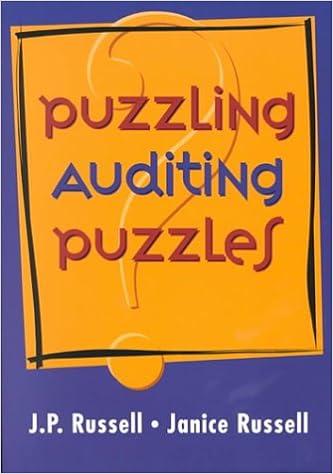You have just been hired as a management trainee by Cravat Sales Company, a nationwide distributor of a designer's silk ties. The company has an exclusive franchise on the distribution of the ties, and sales have grown so rapidly over the last few years that it has become necessary to add new members to the management team. You have been given responsibility for all planning and budgeting. Your first assignment is to prepare a master budget for the next three months, starting April 1. You are anxious to make a favorable impression on the president and have assembled the information below. The company desires a minimum ending cash balance each month of $10,000. The ties are sold to retailers for $8 each. Recent and forecasted sales in units are as follows: Var 8 January (actual) 36 000 February (actual) | 29 000 March (actual) 27 000 April 31 000 May 45 000 June 65 000 July 47 000 August 38 000 The large buildup in sales before and during June is due to Father's Day. Ending inventories are supposed to equal 90% of the next month's sales in units. The ties cost the company $5 each. Purchases are paid for as follows: 50% in the month of purchase and the remaining 50% in the following month. All sales are on credit with no discount, and payable within 15 days. The company has found, however, that only 25% of a month's sales are collected by month-end. An additional 50% is collected in the following month, and the remaining 25% is collected in the second month following sale. Bad debts have been negligible. The company's monthly selling and administrative expenses are given below: $1 per tie Variable: Sales commission Fixed: Wages and salaries Utilities Insurance Depreciation Miscellaneous $22 000 $14 000 $1 200 $1 500 $3000 All selling and administrative expenses are paid during the month, in cash, with the exception of depreciation and insurance expired. Land will be purchased during May for $25,000 cash. The company declares dividends of $12,000 each quarter, payable in the first month of the following quarter. The company's balance sheet at March 31 is given below: Assets Cash $ 14,000 Accounts receivable ($48,000 February sales; $168,000 March sales) 216,000 Inventory (31,500 units) 157,500 Prepaid insurance 14,400 Fixed assets, net of depreciation 172,700 Total assets $574,600 Liabilities and Stockholders' Equity Accounts payable $ 85,750 Dividends payable 12,000 Capital stock 300,000 Retained earnings 176,850 Total liabilities and stockholders' equity $574,600 The company has an agreement with a bank that allows it to borrow in increments of $1,000 at the beginning of each month, up to a total loan balance of $40,000. The interest rate on these loans is 1% per month, and for simplicity, we will assume that interest is not compounded. At the end of the quarter, the company would pay the bank all of the accumulated interest on the loan and as much of the loan as possible (in increments of $1,000), while still retaining at least $10,000 in cash. QI)SALES BUDGET May June Quarter April $ 31,000 $ 45,000 $ 65,000 $ 141,000 Budgeted sales in Units Selling price per Units TOTAL SALES $ 8 1.128,000 April $ 58,000 $ Columni February sales March sales April sales May sales June sales TOTAL CASH COLLECTIONS 8 $ 8 $ 8 $ 248,000 360,000 S 520,000 $ Q2)EXPECTED CASH COLLECTIONS May June Quarter 58,000 $ $ $ 108,000 $ 54,000 $ 62,000 $ 124,000 $ 62,000 5 $ 90,000 $ 180,000 $ S $ 130,000 $ 228,000S 268,000S 872,000 $ 162,000 Uuuu $ 248,000 S 270,000 $ 130,000 868,000 Q3) MERCHANDISSE PURCHASE BUDGET Columni March April May June Quarter Buget sales in units $ 27,000 $ 31,000 $ 45,000 $ 65,000 $ 141,000 ADD:budgeted ending inventory (90% of next month's sales in units) $ 27,900 $ 40,500 $ 58,500 $ 42,300 $ 42,300 Total needs $ 54,900 $ 71,500 S 103,500 $ 107,300 $ 183,300 LESS:beginning inventory $ 24,300 S 27,900 $ 40,500 $ 58,500 $ 27,900 Required unit purchases $ 30,600 $ 43,600 $ 63,000 $ 48,800 $ 155,400 Unit cost. (XS) $ 5 $ 5 $ 5 $ 5 $ 5 REEQUIRED PURCHASE ($) S153,000 218,000 $ 315,000 S 244,000 S 172,000 04) BUDGETED CASH DISBURSEMENT FOR MERCHADISE PURCHASE Columni April May June Quater March Purchases $ 76,500 $ $ S 76,500 April Purchases $ 109,000 $ 109,000 $ $ 218,000 May Purchases $ $ 157,500 $ 157,500 S 315,000 June Purchases $ S $ 122,000 $ 122,000 $ 185,500 5 266,500S 279,500 5 931,500 Required: Prepare a master budget for the three-month period ending June 30. Include the following detailed budgets: 1. A cash budget. Show the budget by month and in total. 2. A budgeted income statement for the three-month period ending June 30. Use the contribution approach. 3. A budgeted balance sheet as of June 30. YE









